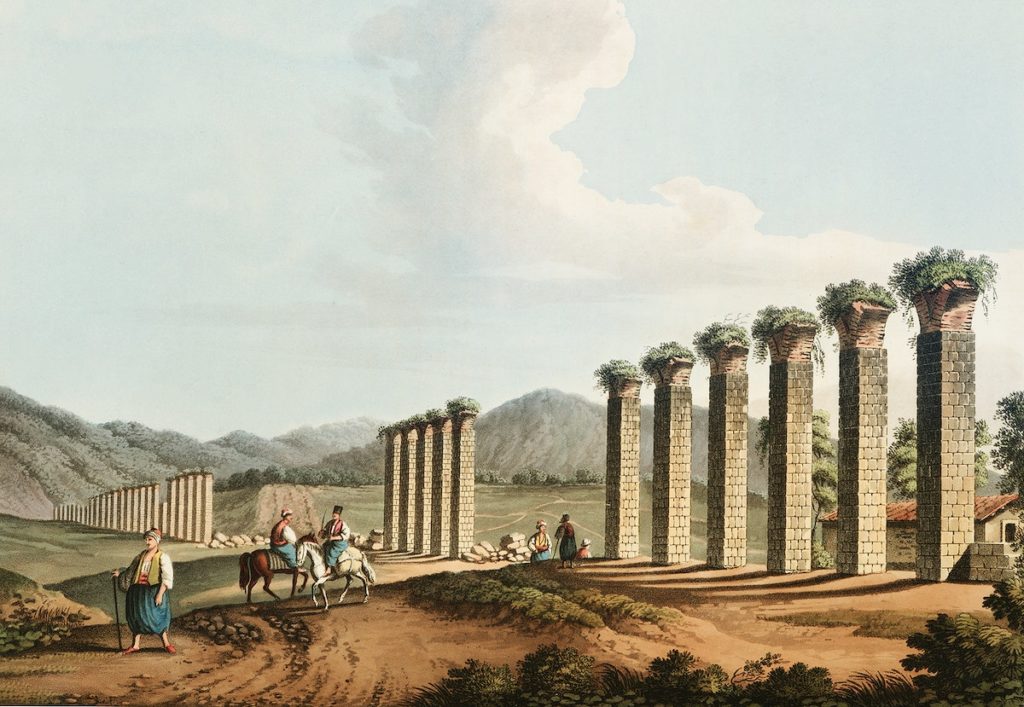The city of Ephesus was one of the most important cities in the ancient world, and a complex system of aqueducts was developed to meet its water needs. The aqueducts of the city go back to the Greek and Roman eras. A large part of this system which is visible today was built during the Byzantine period and supplied the city with water for centuries.
Features of the Ephesian Aqueducts
The aqueducts started from the Şirince Gorge and extended to the city of Ephesus. Various materials such as stone and brick were used to build the arches. The arches were built on an inclined plane to ensure the steady flow of water. Some parts of the arches passed underground, while other parts were built on high bridges or hills

Source and Use of Water
The water carried by the aqueducts was obtained from the Selçuk and Belevi water springs. The water was first transported to Ayasuluk Hill which is today where Saint Jonn’s Church is located. It was then distributed to other parts of the city via pipes and channels. Water was used for various purposes such as drinking, irrigation, and of course baths.
Historical Significance of the Aqueducts
The aqueducts of Ephesus provide important information about the city’s history and engineering skills. The strength and grandeur of the arches reflect the power and wealth of the Roman and Byzantine Empires. The arches are an important part of the Ephesus Ancient City, which is included in the UNESCO World Heritage List.
Current Status of the Aqueducts
Some parts of the aqueducts have survived to this day intact. These sections are popular tourist attractions. unfortunately, other parts of the arches have been destroyed or recycled over time. Today recycling or destroying any part of the aqueducts is strictly forbidden and punishable by prison time.
Three Interesting Facts About The Aqueducts Of Ephesus
- Marble Marvel: The Byzantine engineers of Ephesus weren’t afraid to recycle! Parts of their aqueducts were constructed using leftover marble blocks from the Temple of Artemis, one of the Seven Wonders of the Ancient World. Imagine walking past an aqueduct knowing it held pieces of a legendary wonder!
- Waste Not, Want Not: Ephesians were resourceful with their water usage. After flowing through city fountains, leftover water wasn’t simply wasted. It was channeled into elaborate networks for irrigation, powering mills, and even flushing public toilets – a testament to their commitment to efficient water management.
- Nose Knows: The Ephesians weren’t just good at engineering, they were also concerned about water quality! They added lead to some aqueducts to kill bacteria, but over time, this could leach into the water supply.
Hire An Ephesian Tour Guide For Visiting Aqueducts Of Ephesus
Aqueducts of Ephesus will be easy to visit in our Ephesus tour and have no extra visiting fee. Contact me to hire a professional English-speaking tour guide in Ephesus, Turkey. See you soon, Hasan Gülday.